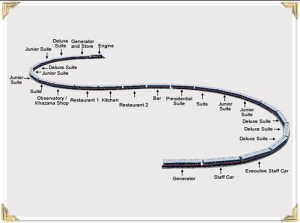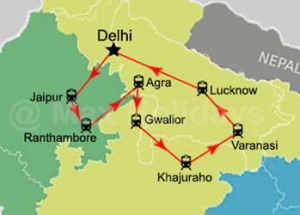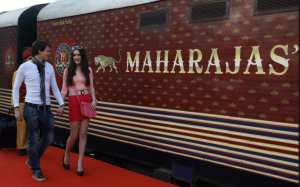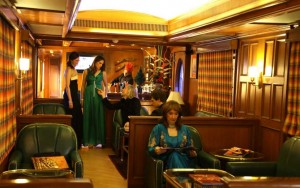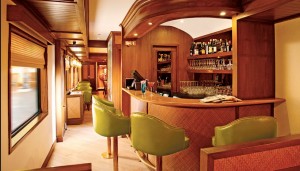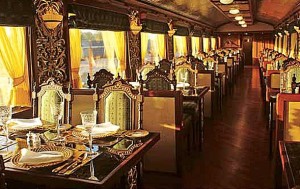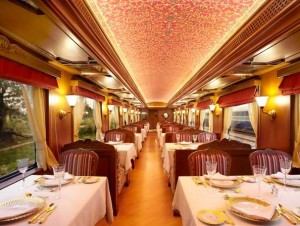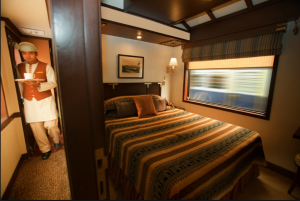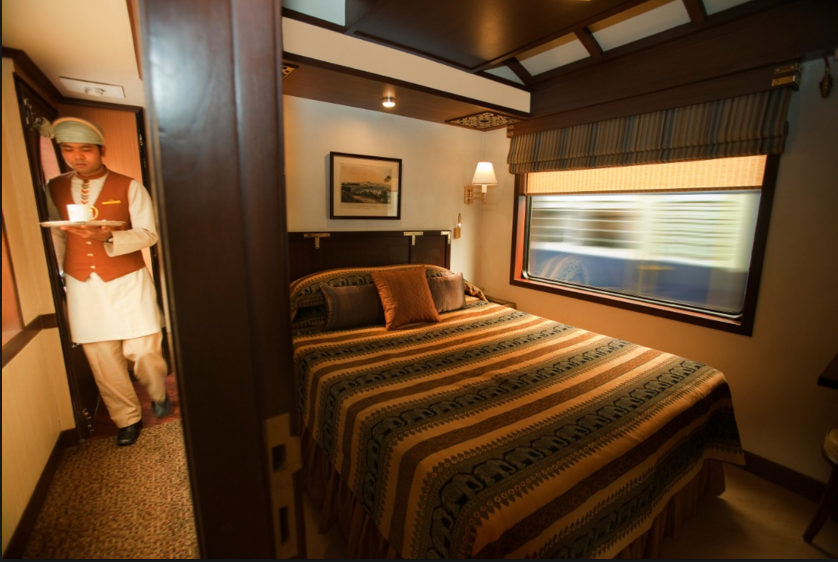
168 year old royal railways the Luxurious Maharaja Express
Maharaja’s Express is one of the five luxury trains with 19 carriages, operating in India, providing unrivalled view of some of the historical known sights in the north and west India. The train moves on each night, and everything in the train is kept looking immaculate by an army of meticulous staff.
In 1844, the Indian Railways, then known as the East Indian Railway Company, founded by the then Governor of India, Lord Hardinge, who introduced several experimental trains from Bombay to Calcutta. The real breakthrough came in 1853, when the first passenger train service was inaugurated between Bombay and Thane. Subsequently, Lord Dalhousie, the Governor-General of India, created a network of trunk lines connecting the principal regions of India. Today, the Indian Railway stands as one of the largest and busiest rail networks in the world, catering to 19 million passengers and carrying more than 2.5 million tonnes of freight daily, it traverses the length and breadth of the country and covers 6,909 stations – a gigantic route of more than 63,327 kms. With a workforce of 1.5 million, it is the single largest employer in the world.
One of the routes was the Indian Panorama itinerary, which beings in Jaipur famous for its pink buildings, overlooking the pale hills. In 1727, Jai Singh II created Jaipur, with an exotic Amber Palace enshrining the Rajput architecture with carving mirrors, embedded with precious stones. Then there is the elephant polo, which the passengers are invited to play. Then on to the Ranthambore National Park, which was once the hunting ground of the Maharaja of Jaipur in the midst of lakes and forested hills, filled with at least 55 tigers, monkeys, peacocks, and spotted deers.
Then on to Fatehpur Sikri, the vast architecture commissioned by Akbar, the third Mogul ruler, in 1571 and completed in 1580s, but was abandoned when the water supply ran out within 15 year and the capital was shifted to Agra. The ornate courtyards, gardens and halls restored to its glory by Lord Curzon in 1905.
Then on to see at the crack of dawn, to see the world’s greatest monument to love, the Taj Mahal, creation by the heartbroken Shah Jehan for his beloved Mumtaz and his last years incarcerated by his ruthless third son Aurangzeb. From his prison window Shah Jehan was able to see the huge white tomb build for his wife, Mumtaz Mahal.
In South Agra, a procession of Jains, men naked and women in white saris, roving through the passages and small courtyards in the 500-year-old Sandstone Palace at the Gwalior and then on to the vast Jai Vilas Palace designed by Lt Col Sir Michael Filose. The Maharaja of Gwalior’s 400-room palace was ready to receive, Prince of Wales, Edward during his 17- week tour of India in 1875-1876. The medieval fort palace of Orchha and the Raj Mahal the 17-century murals of religious subjects and court life, with narrow –entranced camel stables stand still decorated with Turquoise and cobalt coloured tiles.
Next stop Khajuraho, famous for their erotic sculptures, nubile couplings on Hindu and Jain temples built by the Chandela kings between 950 and 1150.
Varanasi the religious capital of India as one of the Hindus’ seven holy cities and the place where Siddartha, the founder of Buddhism who preached the first sermon around 528 BC. The twilight boat journey on the Ganges to witness the evening puja, with Brahmin priests chanting, chiming of the bells, fireworks, and making offerings witnessed by several thousand gathered on the river banks.
On the final day In Lucknow, famous memorial to the Indian Mutiny/First War of Independence has been well cared for post-independence, as well as Lucknow’s Great Imambara 18th century building for mourning which has the largest vaulted halls in the world 163 feet long and 49 feet high, with a maze of narrow passageways on two levels above accessed by 489 identical doorways, with a flat roof above giving panoramic views across the city.
Booking
For booking in Britain: Luxury Train Club (01249 890205; www.luxurytrainclub.com)
Time
Itineraries are for three or seven nights.
Indian Panorama (three): Delhi–Jaipur–Ranthambore–Fatehpur Sikri–Agra–Gwalior–Orchha–Khajuraho–Varanasi–Lucknow–Delhi.
The Heritage of India (seven): Mumbai–Ajanta–Udaipur–Jodhpur–Bikaner–Jaipur–Ranthambore–Fatehpur Sikri– Agra–Delhi
Gems of India (three): Delhi–Agra–Ranthambore–Jaipur–Delhi.
Treasures of India (three): Delhi–Agra–Jaipur–Delhi.
Indian Splendour (seven): Delhi–Agra–Ranthambore–Jaipur–Bikaner–Jodpur–Udaipur–Balsinor–Mumbai.
Cost
The Heritage of India ( 8 Days/ 7 Nights):
Deluxe Cabin US $ 6545.00
Junior Suite US $ 9,890.00
Suite US $ 13, 500.00
Presidential Suite US $ 23, 700.00
Treasures of India and Gems of India: $3,850; the seven-night Heritage of India: $6,840, Indian Panorama and Indian Splendour: both $5,980.
- Winner of CNBC AWAAZ Travel Awards 2015 for Best Luxury Train
- Winner of the World Travel Award 2014 and 2013 for the category “Worlds Leading Luxury Train”
- Winner of the “Excellence in Luxury” at the Royal India, 2013, Dubai
- Winner of the World Travel Award 2012 for the category “Worlds Leading Luxury Train”
- 1st Runner up in the Conde Nast Readers Choice Travel Awards 2011
- Winner of CNBC AWAAZ Travel Awards 2010 for Best Luxury Train

